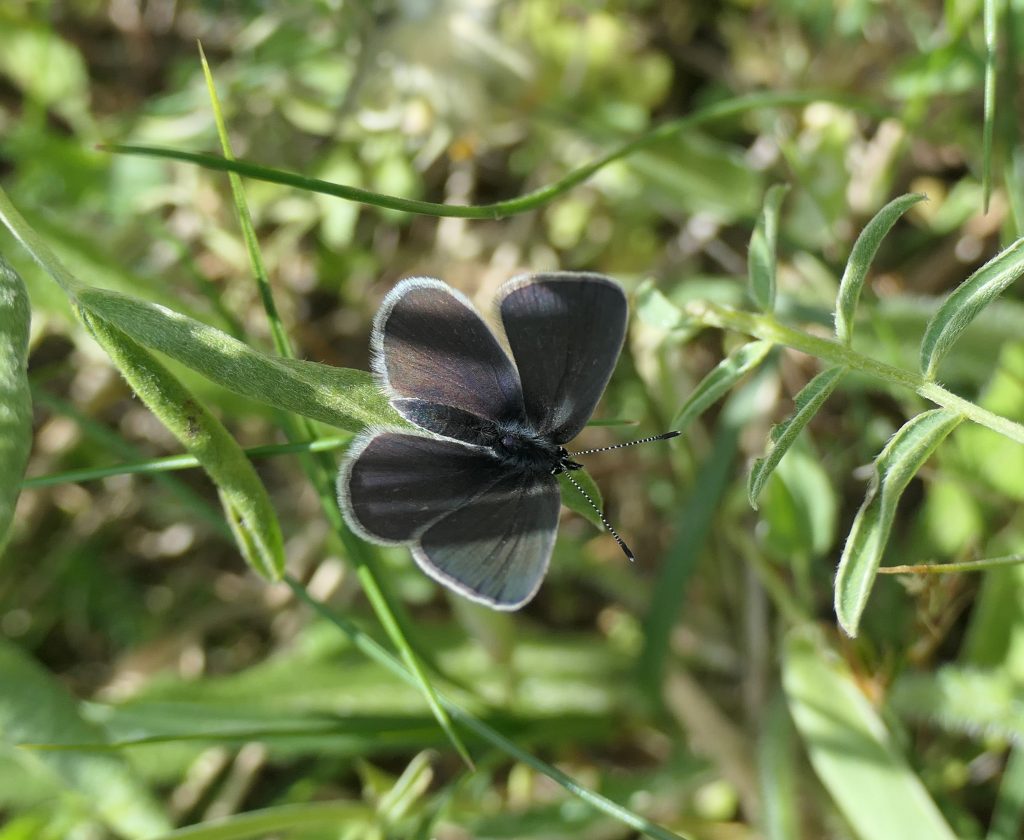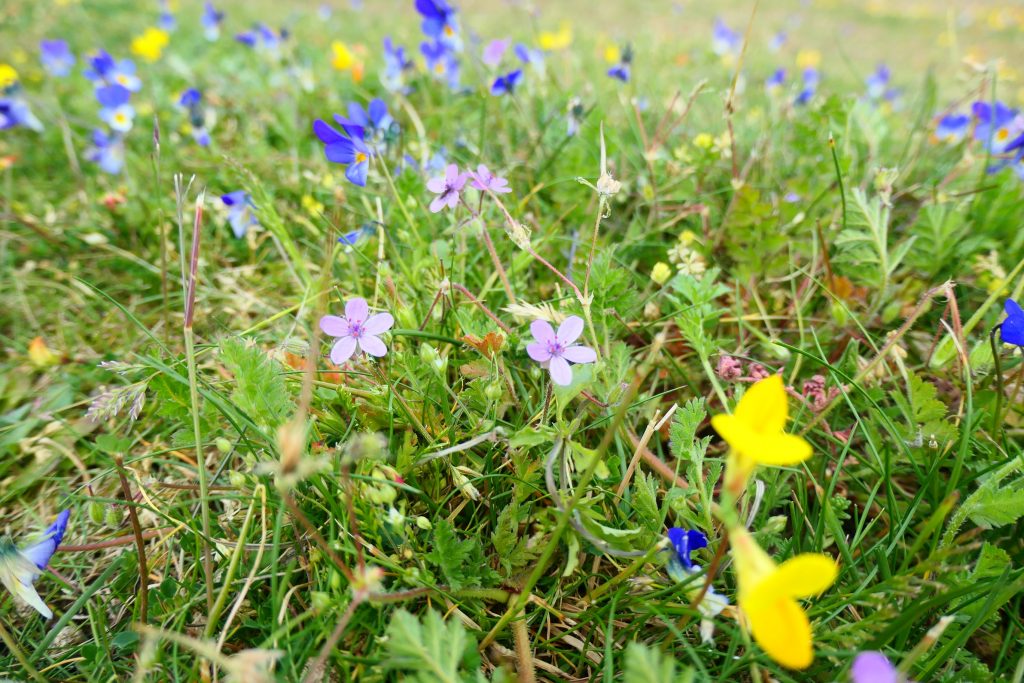The cool, windy sunny conditions we have seen during early June continued during our Mornington walk. The dunes are home to wonderfully flower-rich grassland where Skylarks are conspicuous by sight and sound, contributing their tune to wind and wave song. Strolling here amid the glories of the dune grasses reminds me how bland Ireland’s general landscape has become, despoiled and impoverished by the ravages of modern agriculture. The extreme east of Meath contains the county’s best semi-natural grassland habitats but even here threats are extending: montbretia, sycamore and Sea Buckthorn are all biological menaces, their alien invasive presence intruding onto this slice of remnant richness.

The scents of the flora and wild grasses recall childhoods for today’s over 40s. Few younger adults and children have these biological or memory baselines, a factor that will influence future perceptions of what Ireland’s land ought to look like. That’s one reason why maintenance of the good remaining patches is vital. We need biodiverse areas as a benchmark for restoration schemes for biological resources and exemplars to support action.

After uprooting most of the montbretia in one patch adjoining the parking area, we set out to seek nature. Scarily few Small Blues were evident. Their breeding habitat is in excellent condition, so why were there so few? A clue might lie in the condition of those we did see, all perfect, newly hatched. Perhaps we are seeing just the beginning of its flight period in this area. Many Common Blues showed wear and tear indicative of some days on the wing.

Recent survey work shows its presence in nearly 10% of Ireland’s 10km squares but many colonies occupy small areas and contain few individual butterflies.
Small Heaths were active, males fighting for control of the breeding ground. Two were fighting like two male Speckled Woods who believe a patch is their property, circling each other in tight circles of fury, with neither giving way. This is typical of the behaviour of male Small Heaths I have seen elsewhere. According to Thomas and Lewington (2014), larger-winged males tend to win, so smaller males are pushed away from favoured mating sites, diminishing their chances of mating success. The same source states that males are less likely to be territorial during hot weather when they favour search flights rather than settling on the ground to await females.
We saw no Cinnabar moths, again suggesting that it is yet to emerge in Mornington. We saw a beautiful Yellow Shell moth, its golden shell-marked wings appropriate for a coastal habitat. A Mother Shipton moth was also recorded. A couple of fast-moving Ruby Tiger moth caterpillars were spotted too, one on the soil, the other on ragwort. Both wriggled off at speed when disturbed.
Common Blues were not numerous but striking, typically the large examples found in Ireland. A single female was seen, with brown uppersides. Those in the west and parts of the midlands are blue or contain blue with brown scales on their upper surfaces. The colour differences might relate to climatic conditions, with bluer females associated with cooler, cloudier, damper situations away from the east coast.
It was a pleasant event, and the lovely newlyweds who attended were great company. We wish them every success in the years ahead.


